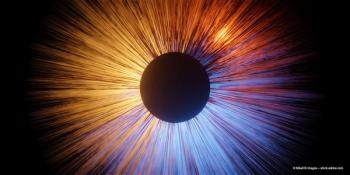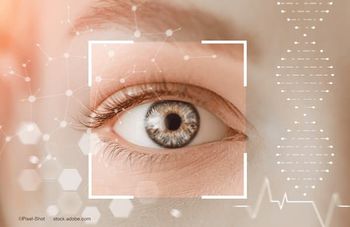
Anteronasal transposition: A new twist on the inferior oblique muscle
In patients with severe superior oblique palsy with a large degree of excyclotorsion, anteronasal transposition of the inferior oblique muscle can be considered as the primary procedure of choice.
Take-Home Message: In patients with severe superior oblique palsy with a large degree of excyclotorsion, anteronasal transposition of the inferior oblique muscle can be considered as the primary procedure of choice.
By Lynda Charters; Reviewed by Sonal R. Farzavandi, FRCS
Singapore-Anteronasal transposition of the inferior oblique muscle can be considered as the primary procedure of choice in patients with severe superior oblique palsy with a large degree of excyclotorsion.
Sonal R. Farzavandi, FRCS, described a surgical technique with a “twist” on the oblique muscle in an 11-year-old girl. Dr. Farzavandi is senior consultant, Pediatric Ophthalmology and Strabismus Service, Singapore National Eye Centre, Singapore.
Case report
The only remarkable finding in this child was a Marcus Gunn jaw winking ptosis of the left eye. Vision in each eye was 20/20 with excellent binocular function and no strabismus.
The oculoplastics team planned to perform a left eye extirpation of the levator palpebrae superioris and fascia lata brow suspension. Intraoperatively, the levator muscle was isolated and cut.
However, the superior oblique muscle was also cut inadvertently and the cut ends were identified and sutured with 5-0 Mersilene. After the repair, the surgery continued with the fascia lata brow suspension, Dr. Farzavandi said.
Three weeks postoperatively, the child presented with symptomatic torsional diplopia that was worse in downgaze. She reported difficulty in reading and could fuse the images with reasonable stereopsis with a head tilt to the right.
In the nine gaze positions, Dr. Farzavandi described that the patient has a classical left superior oblique palsy. There was a left hypertropia of 20 prism diopters (PD) in the primary position that increased to 25 PD in right gaze and worsened in dextrodepression, a small esotropia in downgaze, and excyclotorsion 8 degrees in primary gaze increasing to 13 degrees in downgaze (Figures 1 and 2).
The head tilt test showed orthophoria on right head tilt, but with left head tilt, there was a 25 PD left hypertropia.
Dr. Farzavandi considered a few options, one of which was left eye inferior oblique anteriorization. Her concern was that procedure would not correct 13° of excyclotorsion in downgaze.
A second option was to perform a Harada Ito procedure in the left eye as the second stage in the presence of residual torsion. However, scarring in the surgical area was a major consideration.
The third surgical option was a combined left eye inferior oblique anteriorization and a Harada Ito procedure. Dr. Farzavandi was concerned about the risk of overcorrection and possibly additional torsional symptoms.
The fourth option was recession of the inferior rectus of the right eye to address the hypertropia and balance torsion. However, in this case the parents did not consent to surgery on the good eye.
It was while Dr. Farzavandi was contemplating the aforementioned options that she heard a presentation by Professor Vincent Paris, associate professor of ophthalmology, Liege University, Belgium.
Surgical plan
Dr. Paris recommended an anteronasal transposition of the inferior oblique muscle in the left eye with the aim of converting the muscle from an extorter to an intorter. Stager and colleagues reported this procedure previously (Binocul Vis Strab Q. 2001;15:43-44).
Dr. Farzavandi performed the procedure on the patient under discussion after receiving parental consent. She isolated the inferior oblique muscle in the standard manner, disinserting it from the insertion, and securing with 6-0 Vicryl suture. The inferior rectus muscle was slung in order to move the inferior oblique muscle from the temporal to the nasal quadrant.
She used a Gass hook, which has a eyelet at the hook tip, to pass the traction sutures without having to create extensive peritomies (Figure 3).
An inferior medial fornix incision was made to isolate the medial rectus muscle, and the lower border exposed, to facilitate moving the inferior oblique muscle from the temporal to the nasal quadrant inferior to the lower border of the medial rectus muscle, Dr. Farzavandi described.
After slinging both the inferior and medial recti muscles, a small tunnel was created under the conjunctiva over the inferior rectus muscle to “string across” the inferior oblique muscle. The inferior oblique muscle was then brought across below the inferior rectus muscle.
The next step was to determine the position at which the inferior oblique muscle should be transposed. Dr. Farzavandi opted for the midpoint between the inferior rectus and the medial rectus muscle at about 3 mm along the spiral of Tillaux, just below the lower border of the medial rectus muscle.
The concern at this point was the type of suture-i.e., absorbable or non-absorbable, and she opted for the absorbable suture (Figure 4).
Postoperatively, the patient had no head tilt. She had orthophoria in primary position with no diplopia except in upgaze (Figure 5).
There was no excyclotorsion in primary position and 3° of excyclophoria on downgaze, which she was able to fuse well (Figure 6).
The compromise was limited elevation in adduction in the left eye, because of absence of the inferior oblique action in upgaze.
“This procedure is a viable option with a stable surgical result,” Dr. Farzavandi said. “It can be considered as a primary procedure of choice in patients with severe superior oblique palsy with a large degree of excyclotorsion.”
Sonal R. Farzavandi, FRCS
This article was adapted from Dr. Farzavandi’s presentation during Pediatric Subspecialty Day at the 2014 meeting of the American Academy of Ophthalmology. Dr. Farzavandi has no financial interest in any aspect of this report.
Newsletter
Don’t miss out—get Ophthalmology Times updates on the latest clinical advancements and expert interviews, straight to your inbox.








































